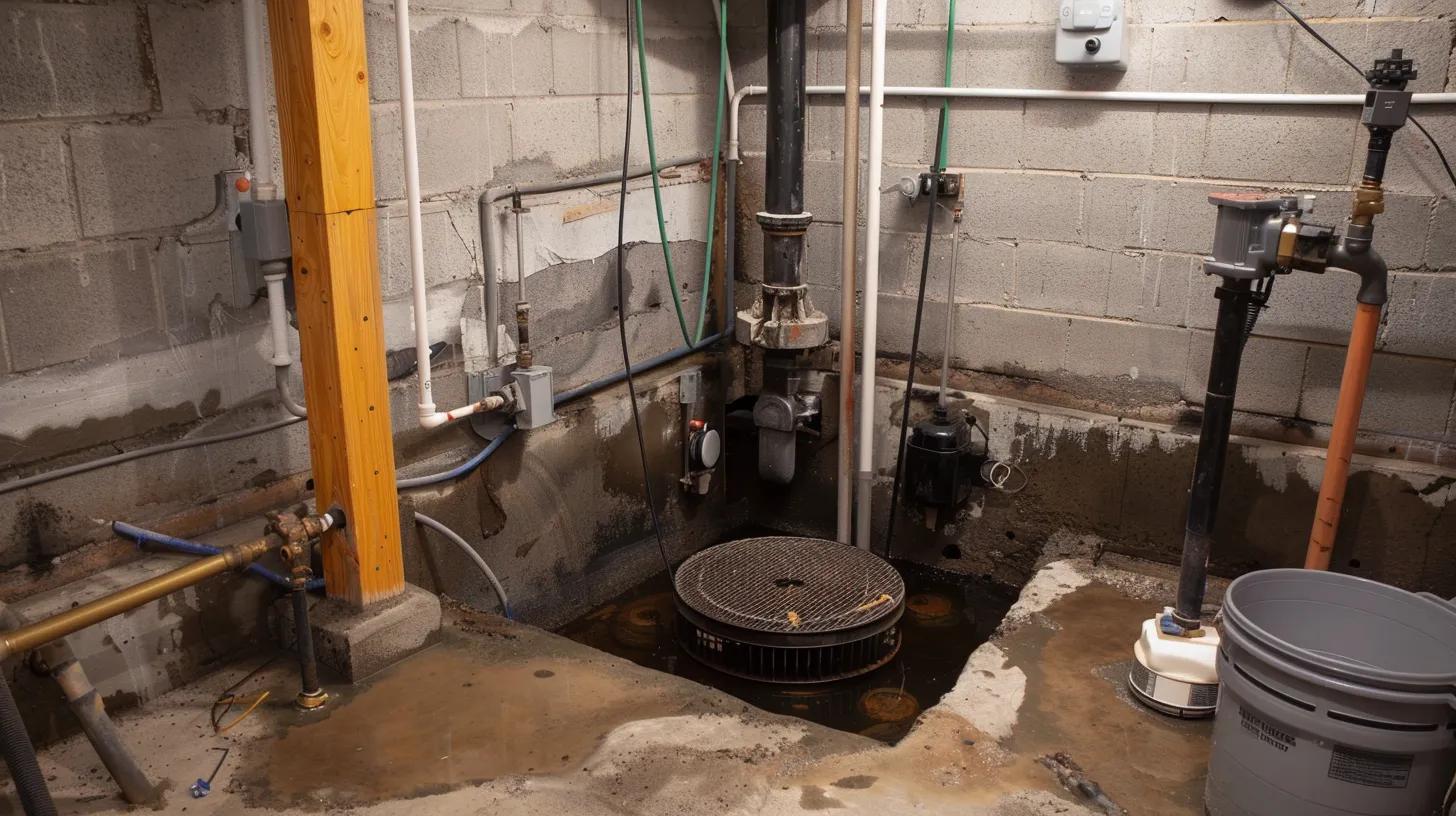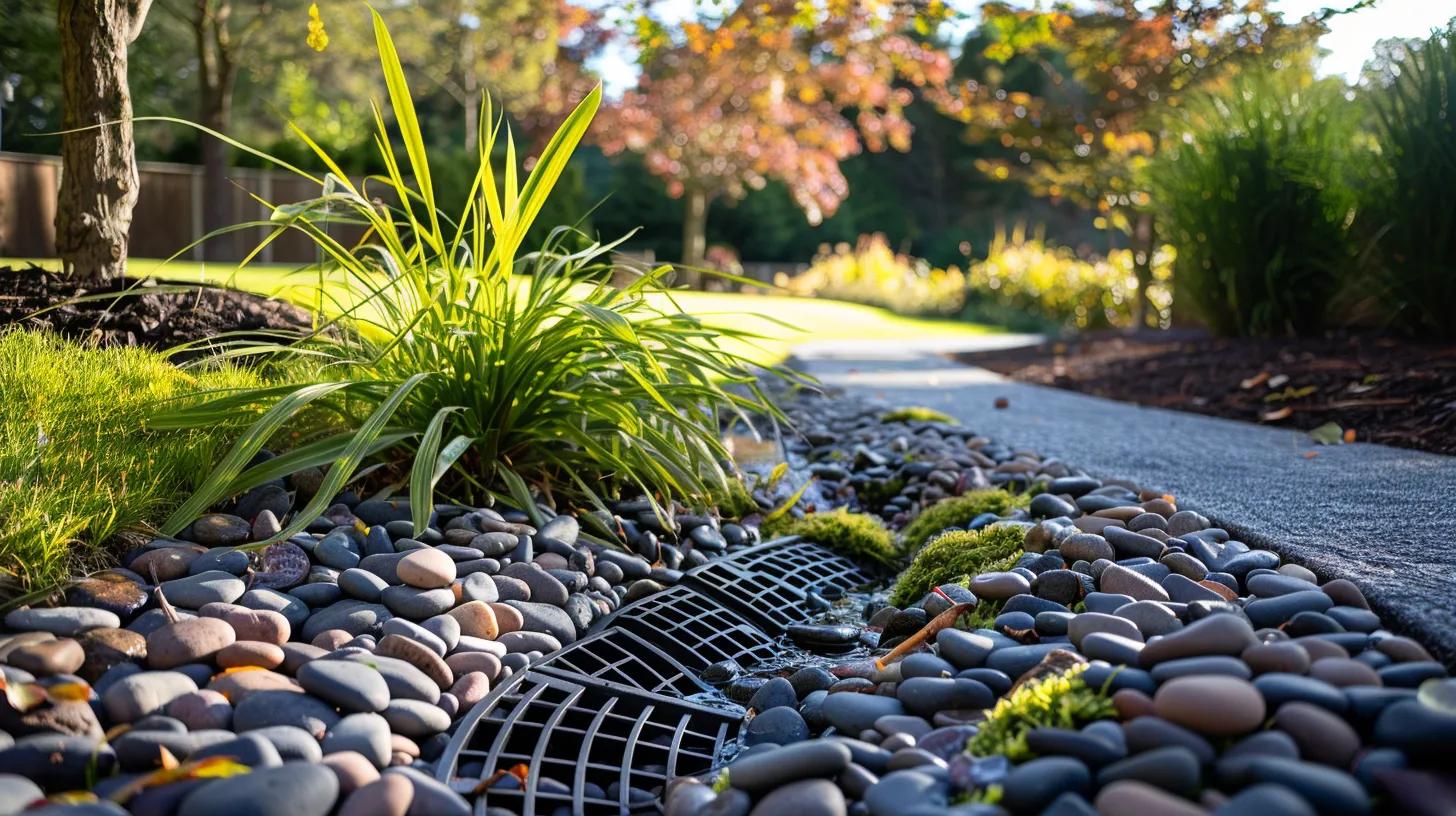Top Foundation Drainage Solutions for Wet Basements: How to Prevent Water Damage and Keep Your Basement Dry
Basement flooding impacts nearly one in five homeowners yearly, but effective foundation drainage solutions can stop water intrusion at its source. In this guide, we define proven drainage systems, explain how to spot early warning signs of poor drainage, detail the best installation materials and techniques, cover maintenance and troubleshooting, compare cost-effective options, and examine environmental factors that influence your choices. By integrating our expertise at SBW Basement Waterproofing Springfield MA with leading industry practices, we show how to keep your basement dry and structurally sound.
The Most Effective Foundation Drainage Solutions for Basements
Foundation drainage solutions direct groundwater from your foundation to prevent hydrostatic pressure, soil saturation, and seepage. These systems work by intercepting water, transporting it through pipes or channels, and expelling it safely. For example, a french drain channel installed along the footing captures water before it reaches foundation walls.
Foundation Drainage and Hydrostatic Pressure
Foundation drainage systems are designed to redirect groundwater away from a building’s foundation, preventing the buildup of hydrostatic pressure. This pressure can lead to soil saturation and water seepage, potentially causing significant structural damage over time. Effective drainage solutions are crucial for maintaining the integrity and longevity of a building’s foundation.
Key solutions include french drain systems, sump pump installation, exterior waterproofing, and interior drainage channels. Each option offers unique benefits based on soil type, budget, and site constraints, and SBW Basement Waterproofing Springfield MA customizes these methods to local Springfield conditions.
These core options form the foundation for more detailed explorations, beginning with the most widely used system: the french drain.
How a French Drain Works to Protect Your Basement
A french drain consists of a perforated pipe in a gravel-filled trench next to the foundation to collect and redirect groundwater away from your home. Water enters through pipe perforations and flows by gravity to a safe discharge point or sump pit. This system reduces hydrostatic pressure against foundation walls and prevents water intrusion.
Advanced installations at SBW include geotextile fabric wrapping to block sediment, ensuring long-term performance in Springfield’s clay soils. Proper slope and outlet placement guarantee continuous flow, making french drain systems the cornerstone of adequate foundation drainage.
The Benefits of Installing a Sump Pump System

A sump pump system features a collection pit (sump basin) that gathers water from drain inlets or interior channels and then automatically pumps it away from the foundation. This mechanism provides reliable, on-demand water removal, preventing basement flooding during heavy rains or rising groundwater.
Sump Pump System Benefits
Sump pump systems provide reliable protection against basement flooding by automatically removing accumulated water. These systems are particularly effective during heavy rainfall or when groundwater levels rise, offering continuous protection through automatic sensors and backup power options. They are a key component of comprehensive waterproofing strategies.
- Continuous Protection – Automatic sensors activate the pump before water levels rise.
- High Capacity – Models can move hundreds of gallons per hour.
- Backup Options – Battery-powered or water-powered backups ensure operation during outages.
Installing a quality sump pump with alarm systems and backup power adds layers of security, which SBW Basement Waterproofing Springfield MA includes in our comprehensive waterproofing packages. With active removal handled, exterior drainage systems further safeguard your foundation.
How Exterior Drainage Systems Prevent Basement Flooding

Exterior drainage systems combine excavation, waterproof membranes, and drain pipes to divert water before it reaches the foundation wall. A waterproof membrane applied to the foundation exterior prevents moisture penetration, while an adjacent drain pipe collects and carries water away.
- Excavating around the foundation perimeter.
- Applying a dimpled drainage mat or membrane.
- Laying perforated pipe on a gravel bed.
- Backfilling with free-draining aggregate.
This external barrier approach integrates seamlessly with landscaping and prevents water intrusion at the wall, complementing interior solutions and extending long-term protection.
When to Consider Interior Drainage Channels
Interior drainage channels, called under-slab or perimeter drains, operate beneath the basement floor slab to collect water that enters through cracks or along the wall base. These channels funnel water to a sump pit for removal, functioning where exterior excavation is impractical or budgets are limited.
- Cutting or removing a small portion of the slab perimeter.
- Installing PVC or HDPE channel sections.
- Routing to a sump basin with a pump.
This minimally invasive alternative delivers adequate drainage when exterior access is constrained. It links seamlessly into your overall basement waterproofing Springfield MA strategy and teaches you to spot failing systems early.
Identifying Signs of Poor Foundation Drainage in Wet Basements
Recognizing signs of inadequate drainage early allows prompt intervention and prevents structural damage. Poor foundation drainage symptoms manifest as water stains, efflorescence, mold growth, and musty odors. Identifying these issues guides timely repairs or system upgrades.
Common Basement Water Damage Symptoms
- Wall Stains – Dark streaks or white mineral deposits (efflorescence).
- Musty Odors – Persistent damp smell indicating mold or mildew.
- Peeling Paint – Flaking or bubbling paint on walls or floors.
- Rusty Fixtures – Corroded HVAC or plumbing components.
These visible and olfactory cues signal moisture intrusion that typically originates from failing drainage, motivating further inspection for foundation cracks and leaks.
Detecting Foundation Cracks and Moisture Intrusion
A systematic inspection for foundation cracks and moisture involves:
- Visual Survey – Examine walls and floor junctions for hairline to large cracks.
- Moisture Meter – Measure wall and floor moisture levels to pinpoint seepage sources.
- Dye Test – Apply dyed water externally and observe seepage paths internally.
Detecting cracks and moisture pathways informs whether simple sealants suffice or a full drainage system upgrade is required, prompting evaluation by a professional.
When to Call a Professional for Drainage Assessment
Call a professional when you observe:
- Repeated flooding despite temporary fixes.
- Structural cracks wider than 1/8 inch.
- Rising damp that spreads quickly after rain.
- Sump pump cycling excessively.
Our trained basement waterproofing Springfield MA technicians provide comprehensive inspections, detailed assessments, and custom drainage solutions tailored to local soil and climate conditions.
The Best Materials and Techniques for Foundation Drainage Installation
Selecting durable materials and proven techniques ensures long-term drainage performance. Each component must meet structural and hydraulic criteria, from high-density pipes to geotextile fabrics and aggregate.
The Most Durable Drainage Pipes and Gravel Types
Below is a comparison of common pipe and gravel materials used in foundation drainage:
How Proper Grading Improves Drainage Efficiency
Proper grading slopes surface water away from the foundation, preventing accumulation around footings. A minimum slope of 5% (6 inches drop over 10 feet) directs runoff toward swales or storm drains. Well-graded soil layers also support exterior drain mat performance, enhancing overall drainage efficacy and linking seamlessly into sump or french drain outlets.
The Role of Waterproof Membranes in Drainage Systems
Waterproof membranes applied to foundation exteriors create a barrier that stops moisture transmission through concrete walls. These sheets or liquid-applied coatings work in tandem with drainage pipes by ensuring collected water cannot infiltrate the structure. Integrating membranes at the wall-drain interface maximizes protection, preparing surfaces for backfill and preventing direct wall saturation.
Maintaining and Troubleshooting Foundation Drainage Systems
Routine maintenance and prompt troubleshooting extend system lifespan and prevent failures. Drainage solutions require periodic checks for blockages, mechanical wear, and structural damage.
Routine Maintenance Steps for Drainage Solutions
Maintaining drainage systems involves:
- Flushing exterior drain inlets with water annually.
- Inspecting sump pump operation and testing float switches every spring.
- Cleaning filter screens on perimeter channels.
- Checking grading and downspout discharge points for erosion.
Regular upkeep ensures continuous water flow and highlights emerging issues before they escalate.
Clearing Blockages in Drain Pipes and Sump Pumps
Blockages often result from sediment, roots, or debris build-up. Clearing methods include:
- High-pressure Water Jetting – Forces obstructions through the pipe.
- Manual Removal – Using augers or drain snakes for interior channel blockages.
- Pump Debris Screen Cleaning – Removing accumulated solids around the pump inlet.
Efficient clearing restores capacity and prevents water backup, leading to criteria for component replacement.
When Drainage Components Should Be Repaired or Replaced
Replace or repair when you notice:
- Cracked or collapsed pipe sections.
- Sump pumps are older than seven years or have a reduced flow rate.
- Geotextile fabrics that have become clogged beyond cleaning.
- Excessive corrosion on metal components.
Proactive replacement averts complete system failure and maintains reliable basement protection.
Cost-Effective Foundation Drainage Solutions for Wet Basements
Budget constraints need not compromise performance. A mix of DIY and professional approaches can deliver efficient results without overspending.
DIY Drainage Options Compared to Professional Installations
DIY drainage tasks like surface grading, gutter extensions, and simple interior channel kits cost under $1,000 but require homeowner skill and risk variable outcomes. Professional installations provide:
- Engineered design for soil and siting.
- High-quality materials and guaranteed workmanship.
- Integrated solutions with warranties.
Comparing cost, complexity, and longevity helps homeowners decide the optimal approach.
Affordable Materials and Methods for Basement Drainage
Affordable options include:
- Corrugated HDPE Pipe – Lower material cost, easy handling.
- Pre-fabricated Interior Channel Kits – Simplified installation.
- Liquid Rubber Coatings – Budget exterior waterproofing.
These methods deliver reliable performance with minimal investment when professionally guided.
Maximizing Drainage Efficiency Without High Expenses
- Optimizing Downspouts – Ensuring water is discharged at least 6 feet from foundation.
- Installing Rain Barrels – Capturing roof runoff to reduce site saturation.
- Adding Check Valves – Preventing backflow from municipal drains.
These inexpensive enhancements support primary drainage systems and reinforce overall basement protection.
How Climate and Soil Conditions Affect Foundation Drainage Choices
Regional rainfall patterns and soil composition dictate which drainage solutions perform best. Recognizing local conditions guides system design and materials selection.
Drainage Solutions for Clay or Sandy Soils
- Clay Soils – High plasticity and low permeability; french drain systems with geotextile barrier and larger aggregate optimize water capture.
- Sandy Soils – Good permeability; corrugated pipes with pea gravel suffice, reducing excavation depth and cost.
Tailoring pipe size, aggregate type, and trench geometry to soil texture ensures effective water conveyance.
How Local Rainfall Influences Drainage System Design
Areas with heavy seasonal rainfall require higher-capacity pipes (4–6 inches) and larger sump pumps (1–2 HP). Incorporating oversized basins and reserve pump capacity handles peak flows, preventing system overload and basement flooding during storms.
When Additional Waterproofing Measures Are Necessary
Supplemental waterproofing—such as interior coatings, vapor barriers, and dehumidification systems—becomes essential when:
- High water table persists year-round.
- Frequent flash flooding events occur.
- Soil contaminants necessitate chemical-resistant membranes.
Combining drainage with robust waterproofing layers ensures comprehensive defense against moisture intrusion.
Advanced Foundation Drainage Technologies for Wet Basements
Emerging technologies integrate smart monitoring, eco-friendly designs, and system analytics to elevate basement protection beyond traditional methods.
How Smart Sump Pumps Improve Basement Protection
Smart sump pumps feature Wi-Fi connectivity and sensors that send alerts for high water levels, pump failures, or power outages. This proactive monitoring reduces the risk of unnoticed pump malfunctions and offers remote diagnostics, providing peace of mind.
Benefits of Perimeter Drainage Systems with Monitoring
Monitored perimeter systems embed moisture sensors and flow meters within drainage channels to detect blockages or reduced flow rates. Early warnings prompt maintenance, enhancing reliability and preventing basement flooding before it starts.
How Green Drainage Solutions Help Manage Basement Water
Green drainage leverages bioswales, rain gardens, and permeable pavers to attenuate stormwater runoff and recharge groundwater away from foundations. These sustainable features reduce load on conventional drains and provide environmental benefits, aligning water management with landscape design.
At SBW Basement Waterproofing Springfield MA, we combine proven foundation drainage solutions with advanced technologies to protect your Springfield home. Explore our services to design a tailored waterproofing plan or contact us today to schedule a free inspection and quotation.
